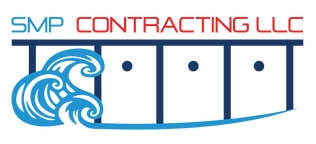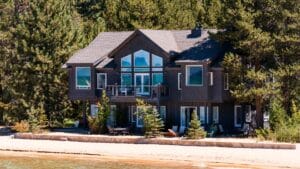Waterfront properties offer breathtaking views, direct access to water recreation, and increased property value. However, they also face significant threats from erosion, storms, and rising water levels. One of the most effective solutions to protect your investment is a well-constructed seawall. In this article, we’ll explore how seawalls work, their benefits, different types, and why they are a crucial addition to any waterfront property.
What is a Seawall?
A seawall is a protective barrier built along coastlines, lakeshores, and riverbanks to prevent erosion and property damage caused by waves, storms, and fluctuating water levels. Seawalls act as a shield between your property and the forces of nature, absorbing and deflecting wave energy to reduce the impact of water movement on the land.
Seawalls can be made from various materials, including concrete, stone, steel, wood, and vinyl. The type of seawall best suited for your property depends on factors such as location, water conditions, budget, and aesthetic preferences.
How Seawalls Protect Your Property
-
Preventing Erosion
One of the biggest threats to waterfront properties is erosion, which occurs when waves and currents gradually wear away the shoreline. Without a seawall, the land can recede over time, leading to structural instability for homes, docks, and other infrastructure. A seawall acts as a sturdy barrier, holding back the soil and preventing erosion from damaging your property. -
Minimizing Flood Damage
Storm surges, high tides, and heavy rainfall can cause severe flooding, leading to costly repairs and property loss. Seawalls help mitigate flood risks by serving as a barrier against rising water levels, keeping your land and structures dry and secure. -
Protecting Landscaping and Outdoor Spaces
If you’ve invested in a beautifully landscaped waterfront yard, a seawall ensures that erosion and water damage don’t wash away your efforts. Gardens, patios, and walkways near the shoreline remain intact, allowing you to enjoy your outdoor space without constant maintenance concerns. -
Enhancing Property Value
A well-maintained seawall adds to your property’s appeal, offering peace of mind to potential buyers. Knowing that a home is protected from erosion and flooding can make it a more attractive investment, leading to higher resale value. -
Supporting Other Marine Structures
Seawalls provide stability for docks, boat lifts, and piers by preventing shifting land and soil loss. Without a seawall, these structures may suffer from uneven settling, increased maintenance needs, and a shortened lifespan.
Types of Seawalls
There are several types of seawalls, each designed to suit different waterfront environments and property needs. Here are the most common types:
-
Vertical Seawalls
-
One of the most common types, vertical seawalls are built straight up and down, providing a strong, rigid barrier against waves. These seawalls are ideal for areas with heavy wave action but may require reinforcement over time due to the force of water hitting directly against them.
-
-
Curved or Stepped Seawalls
-
Designed to deflect and dissipate wave energy, curved seawalls redirect waves back toward the water, reducing impact force. Stepped seawalls work similarly by breaking waves into smaller sections to minimize their power.
-
-
Riprap Seawalls
-
Made from large rocks or concrete blocks, riprap seawalls absorb wave energy by dispersing it across uneven surfaces. This type of seawall is more natural-looking and allows water to filter through, reducing pressure buildup behind the wall.
-
-
Steel or Vinyl Sheet Pile Seawalls
-
Constructed using interlocking panels driven deep into the ground, these seawalls provide a strong, long-lasting solution for areas prone to erosion. They are often reinforced with tie-backs or anchors for additional stability.
-
-
Mound Seawalls
-
Built using loose stone or other materials, mound seawalls create a sloped barrier that gradually absorbs wave energy. These seawalls work well in softer shorelines where more flexibility is needed.
-
Seawall Maintenance and Longevity
Like any structure, seawalls require regular maintenance to ensure long-term effectiveness. Here are key maintenance tips to keep your seawall in optimal condition:
-
Regular Inspections: Check for cracks, erosion behind the wall, or signs of movement.
-
Repair Small Damages Promptly: Address minor cracks or displaced materials before they become bigger problems.
-
Monitor Drainage Systems: Ensure weep holes or drainage pipes remain clear to prevent water pressure buildup behind the wall.
-
Check for Marine Growth: Algae and barnacles can accumulate on seawalls, which may weaken certain materials over time.
-
Reinforce When Needed: Depending on material and exposure, additional support or reinforcement may be required as the seawall ages.
With proper maintenance, a well-built seawall can last for decades, providing continuous protection against water-related damage.
Do You Need a Seawall?
If you own a waterfront property, assessing whether you need a seawall depends on several factors:
-
Erosion Rates: If your shoreline is visibly receding, a seawall can provide immediate protection.
-
Wave and Water Conditions: Areas with frequent storms, strong waves, or high tides benefit significantly from seawalls.
-
Property Usage: If you have docks, boat lifts, or outdoor areas near the water, a seawall adds stability and safety.
-
Local Regulations: Some regions require permits for seawall construction. Consulting with a marine contractor ensures compliance with local codes and best practices.
Choosing a Professional Marine Contractor
Installing a seawall is a significant investment, and working with an experienced marine contractor is essential for long-term success. When selecting a contractor, consider the following:
-
Experience and Expertise: Look for contractors specializing in seawall design, construction, and maintenance.
-
Material Quality: Ensure they use durable, high-quality materials suited for your specific waterfront environment.
-
Customization: A good contractor will assess your property’s unique needs and recommend the best seawall type.
-
References and Reviews: Check customer feedback to gauge reliability and service quality.
-
Compliance and Permitting: Professional contractors handle necessary permits and ensure compliance with environmental regulations.
Final Thoughts
Seawalls play a crucial role in protecting waterfront properties from erosion, flooding, and structural damage. Whether you’re building a new seawall or maintaining an existing one, investing in a high-quality structure ensures long-term security and property value. By understanding the different types of seawalls, their benefits, and proper maintenance, you can make an informed decision that best suits your shoreline needs.
If you’re considering a seawall for your property, consulting a professional marine contractor is the best way to ensure a durable and effective solution. With the right expertise and materials, your seawall will provide peace of mind and lasting protection for years to come.





